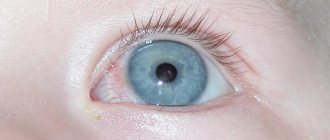Why does cystitis come back again and again?
The following factors contribute to the development and maintenance of inflammation of the bladder mucosa33:
- urolithiasis disease;
- sclerotic changes in the neck, saccular protrusion of the wall (diverticulum) of the bladder;
- narrowing of the urethra;
- neoplasms localized in the bladder.
In some cases, the disease exhibits resistance (resistance) to the therapy used. If this occurs and there are no factors provoking chronic inflammation, it is necessary to exclude specific diseases, primarily genitourinary tuberculosis.33
Clinical picture of chronic recurrent cystitis
The most common signs that cystitis has returned after treatment of the initial episode are33:
- cutting pain in the urethra, perineum, lower back;
- frequent (difficulty) urination;
- cloudy urine mixed with mucus, blood, sediment (often an unpleasant odor).
The clinical picture of repeated cystitis usually contains the same symptoms as in the acute form of the disease, but their severity changes. The course of the pathological process is characterized by periodic exacerbations. A stable course of the disease with minimally severe symptoms and constant laboratory signs is also possible.33
Symptoms of honeymoon cystitis
Women notice that after sexual intercourse they experience pain and pain when urinating. Very often they begin to suspect that their partner has infected them, but doctors do not find anything in tests for infections. But in the urine there is an increased content of leukocytes and erythrocytes, typical for cystitis.
With this disease there is:
- frequent painful urination;
- pain in the suprapubic region;
- feeling of a full bladder;
- slight increase in temperature.
Types of recurrent cystitis in women
In accordance with the generally accepted classification, several forms of chronic inflammation of the bladder mucosa are distinguished.
Chronic latent cystitis:
- with a stable latent course;
- with rare exacerbations;
- with frequent exacerbations;
Persistent cystitis with constant clinical signs of active inflammation, as well as bacteriological and laboratory changes.
There is also a special form of chronic inflammation of the bladder mucosa - interstitial cystitis, which is characterized by frequent exacerbations and changing phases of inflammation. In this case, the walls of the bladder become overgrown with scar tissue, which leads to a gradual reduction in its volume.33
Granulomatous inflammation
In addition to the described acute and chronic cystitis, a special place is given to granulomatous inflammation of the bladder, including tuberculous, iatrogenic, postoperative cystitis and schistosomiasis of the bladder. Considerable attention is paid to granulomatous inflammation of the bladder in patients with connective tissue diseases, such as sarcoidosis, Crohn's disease, rheumatoid polyarthritis, etc.
Tuberculous cystitis (non-bacille Calmette-Guerin associated) is a secondary process. A retrospective analysis of the epidemiology of genitourinary tuberculosis throughout the world showed that the incidence among men is 2 times higher than among women. Genitourinary tuberculosis is one of the most important problems in India, in northern Africa, accounting for 15–30% of extrapulmonary tuberculosis. In the United States, only 20–30% of patients with genitourinary tuberculosis have a history of pulmonary infection. In Russia, bladder tuberculosis, according to various authors, accounts for 10–45.6% of genitourinary tuberculosis. In Moscow, bladder tuberculosis accounts for 13.1% of genitourinary tuberculosis. In 21.1% of cases, bladder tuberculosis leads to the formation of microcysts. Clinically manifested by frequent urination and hematuria. At an early stage of the disease, the cystoscopic picture is characterized by hyperemia around the orifices of the ureter. As the disease progresses, ulcerations of the mucous membrane, fibrosis and contracture of the bladder appear. Fistula formation is possible. Microscopically, signs of acute and chronic inflammation, edema, and the formation of granulation tissue are revealed; sometimes classic tuberculous granulomas with necrosis in the central part, surrounded by epithelioid histiocytes, multinucleated giant cells, plasmacytes and lymphocytes, are found. The outcome of genitourinary tuberculosis may be a decrease in bladder capacity, which requires reconstructive surgery in the form of ileocystoplasty, gastrocystoplasty or the creation of an artificial bladder. It is necessary to recognize the fact that genitourinary tuberculosis remains a serious problem due to delayed diagnosis.
Urogenital schistosomiasis is a tropical anthroponotic helminthiasis caused by trematodes from the family Schistosomatidae, manifested by granulomatous inflammation of the submucosal and mucous layers of the bladder. The most characteristic and constant symptom of the disease is terminal hematuria, a decrease in bladder capacity. First, a pronounced inflammatory reaction develops around the parasite eggs with the formation of granulomas, which leads to mechanical or functional obstruction of the urinary tract. With cystoscopy, you can see loose polypoid formations protruding into the lumen of the bladder, ulcers, pinpoint hemorrhages, granulomas, microscopically - hyperplasia, metaplasia and impaired growth of the urothelium. As the disease progresses, sclerotic changes in the bladder wall increase. Schistosomiasis is thought to lead to the development of squamous cell carcinoma of the bladder.
Iatrogenic granulomatous cystitis can also be caused by the action of the BCG vaccine on the bladder mucosa and surgical interventions. For bladder cancer, immunotherapy became widespread after A. Morales et al. in 1976. for the first time published data on the effective intravesical use of the BCG vaccine, which is highly effective against superficial bladder tumors with a high risk of relapse and is the method of choice for adjuvant treatment of this category of patients. The most common complication of BCG therapy is cystitis, which develops in 80–90% of patients. In 40% of cases, the appearance of gross hematuria is noted. If macrohematuria is present before the next BCG instillation, the procedure is postponed until the bleeding stops. Of interest are the works of J. Sairanen on the study of intravesical administration of the BCG vaccine to patients suffering from interstitial cystitis and chronic pelvic pain syndrome.
Granulomas associated with surgery manifest as mucosal lesions with hemorrhage and necrosis. Microscopically, granulomas are represented by a central zone of necrosis, surrounded by histiocytes and lymphocytes, acidophilic granulocytes and plasma cells. Granuloma of the bladder ligature is a rare complication of hernioplasty, sometimes noted many years after surgery.
Granulomatous inflammation of the bladder can also in rare cases be associated with granulomatous disease in children, sarcoidosis, Crohn's disease, rheumatoid arthritis,6 BCG patients. In Crohn's disease, enterovesical and rectovesical fistulas are formed in 2–8% of cases. Levine S. draws attention to the important fact that, in pathological examination of biopsies of patients with chronic granulomatous disease without the presence of granuloma, the presence of many pigmented macrophages should suggest a diagnosis.
Many investigators have reported granulomatous cystitis in patients with rheumatoid arthritis. S. Al-Kadhi presented a case of granulomatous cystitis in a patient with primary actinomycosis of the bladder.
Recurrent cystitis: treatment of recurrent bladder inflammation
A chronic infectious and inflammatory disease requires complex and long-term treatment33. It is usually aimed at improving the patient’s quality of life, preventing relapses and complications7.
Treatment of repeated cystitis, relapses of which are clearly associated with sexual intercourse, is based on prophylactic antibiotics after intercourse. If chronic inflammation occurs in postmenopausal women, hormonal therapy is recommended to correct estrogen deficiency.7
Antimicrobial therapy is carried out for 7-14 days, but sometimes a longer course is required. First of all, it is necessary to sanitize foci of chronic infection and eliminate the causes of chronicity of the inflammatory process.33
Patients with acute recurrent cystitis also need to be informed about the risk factors that lead to chronic inflammation. First, you need to exclude salty, irritating and spicy foods from your diet. Secondly, to maintain diuresis, you need to maintain a drinking regime. Thirdly, you should definitely adhere to the rules of intimate hygiene, especially after sexual intercourse.7
Treatment
Since many diseases of the genitourinary system, including those caused by STDs, have similar symptoms, a woman is prescribed:
- Analysis of urine;
- blood test (simple and biochemical);
- smear for vaginal infections;
- PCR;
- Ultrasound of the pelvis.
After confirming the diagnosis, treatment is prescribed:
- antimicrobial therapy with prevention of candidiasis;
- diuretics and anti-inflammatory drugs;
- heat on the abdominal area;
- physiotherapy;
- means to strengthen the immune system
During treatment, you need to abstain from sexual activity so as not to further injure the mucous membrane.
In the case of congenital or acquired anatomical anomalies, an operation is prescribed in which the adhesions are dissected and the urethra is raised closer to the clitoral area. Surgery will allow you to get rid of postcoital cystitis forever.
Sometimes the structure of a woman’s genital organs and urethra is such that there is simply nowhere to move the opening of the urethra. In this case, the defect is corrected by the introduction of hyaluronic acid. The disadvantage of this method is that injections have to be done 2-3 times a year, and the cost of such a procedure is not affordable for everyone.
Fitolysin® paste – a natural remedy for cystitis
To avoid recurrent cystitis after treatment of the main episode, patients are recommended to undergo a course of treatment with herbal remedies. One of them may be the herbal diuretic Phytolysin®. It is prescribed for the complex treatment of infectious and inflammatory diseases of the urinary tract together with an antibiotic.6, 7
The drug contains 4 essential oils, as well as 9 plant extracts. It has a diuretic effect, and also relieves inflammation, reduces spasms, and relieves pain. In addition, Phytolysin® relieves frequent urge to urinate. 16
The herbal diuretic is available in an easy-to-use form (paste for suspension). For the treatment of bacterial bladder infections, it is recommended to take it for 2-6 weeks, but if necessary, the course can be extended.6






